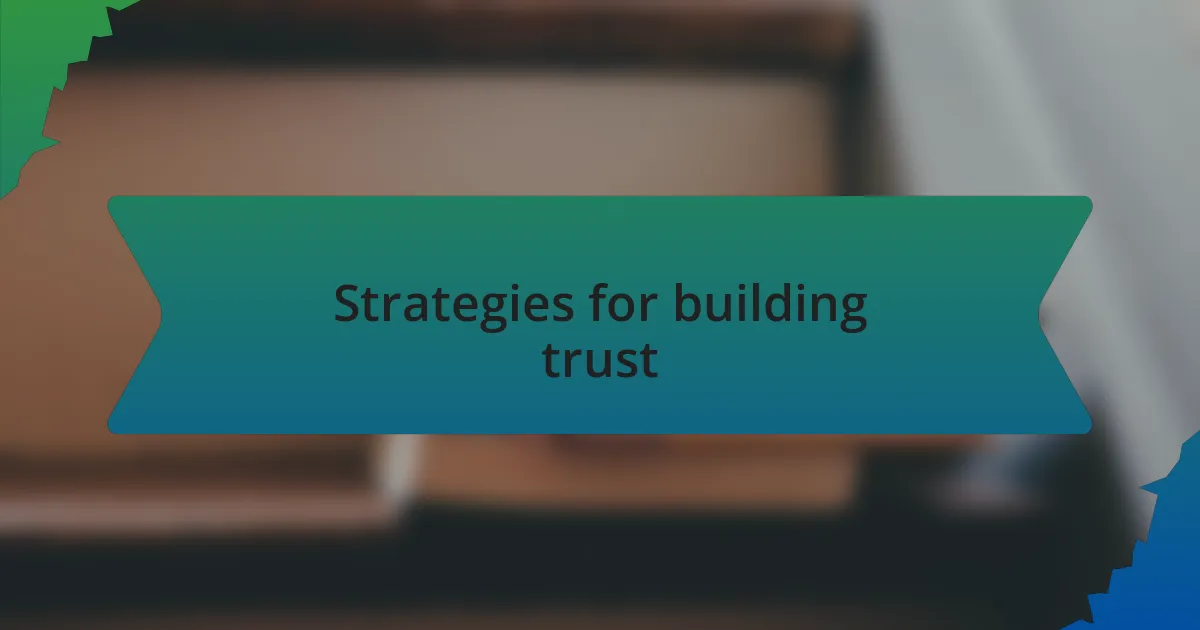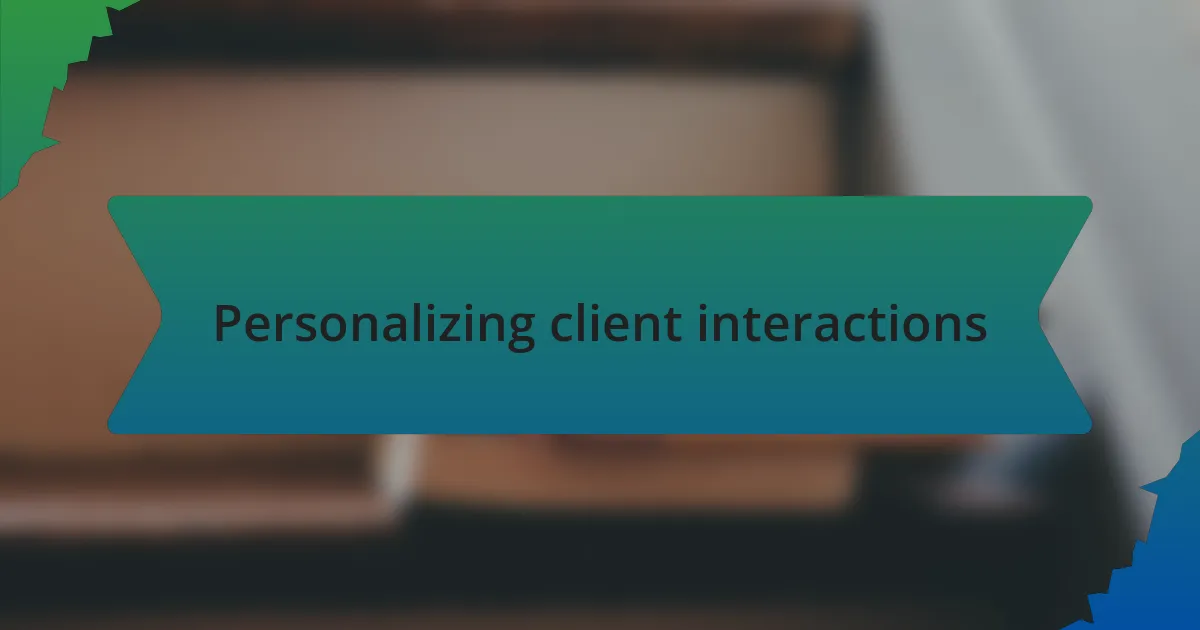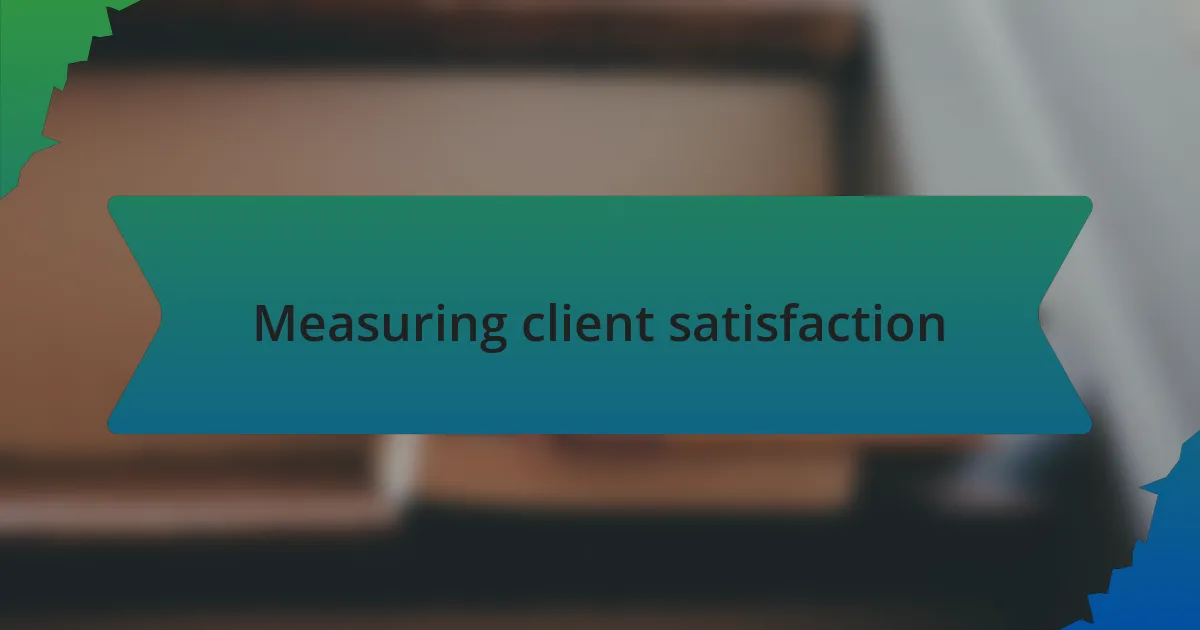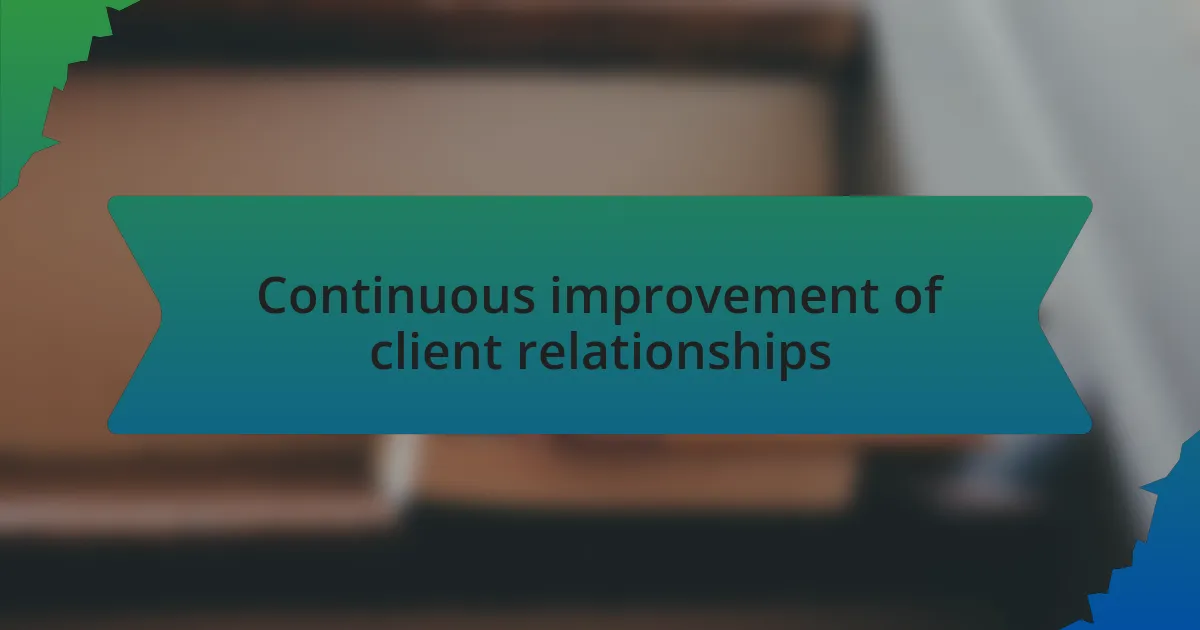Key takeaways:
- See clients as unique individuals to build deeper connections based on shared values.
- Consistent communication and transparency about challenges foster trust and reliability in client relationships.
- Personalizing interactions and adapting communication styles enhance engagement and collaboration.
- Regularly measure client satisfaction through feedback and follow-ups to identify areas for improvement.

Understanding client relationships
To truly understand client relationships, I believe it’s crucial to see each client as a unique individual rather than just a project or a transaction. In my experience, focusing on their specific needs and values fosters a deeper connection. For example, I once had a client who was passionate about environmentally friendly publishing practices. By aligning my approach with their values, we built a strong rapport that extended beyond a typical business exchange.
Have you ever noticed how trust is the foundation of any successful relationship? I’ve often found that being transparent about challenges and celebrating wins, big or small, nurtures that trust. A memorable moment for me was when a client faced unexpected hurdles. Instead of shying away from the conversation, I embraced it, and together we brainstormed solutions. This openness not only resolved the issue but also strengthened our bond.
Moreover, every interaction with clients is an opportunity for growth, both personally and professionally. I recall a time when a client gave me candid feedback about my work; initially, it felt like criticism, but it opened my eyes to new perspectives. How can we improve if we don’t listen? This exchange taught me the value of embracing feedback as part of the evolving relationship between a client and myself.

Strategies for building trust
Building trust is often about consistency. I remember when I committed to weekly check-ins with a client, even if there were no major updates. That regular contact made them feel valued and in the loop, cultivating a sense of reliability that they came to appreciate deeply. Have you ever experienced that kind of dependable presence in a professional relationship? It works wonders.
Another strategy I find effective is sharing my experiences openly. There was a situation where I had to admit a miscalculation on my part concerning a project timeline. Instead of glossing over it, I communicated proactively about the implications and proposed a revised plan. This honesty not only diffused potential frustration but also showed my dedication to transparency. It’s moments like these that truly test your trustworthiness—how do you handle mistakes when they arise?
Furthermore, I believe in the power of personalized communication. I often take notes on clients’ interests and relevant milestones in their lives—like a recent book release or a personal achievement. When I reference these in our conversations, it deepens our connection and shows that I care beyond the business context. Isn’t it refreshing when someone remembers the little details? It transforms a transactional relationship into a genuine partnership.

Effective communication techniques
One effective communication technique I’ve embraced is active listening. The difference it makes is remarkable. There was a time when a client came to me feeling overwhelmed with their project’s direction. I made sure to fully engage by asking open-ended questions and patiently allowing them to express their concerns. This not only provided me with valuable insights but also made them feel heard and understood. Have you ever felt that sense of relief when someone truly listens to you?
I also find that clarity is key in our exchanges. Sometimes, I catch myself using industry jargon that might confuse clients. I’ve learned to break down complex concepts into simple terms, often using analogies that resonate with their experiences. For example, explaining a publishing process as akin to preparing a meal—where each ingredient (or step) contributes to the final dish—has always sparked interesting conversations. It’s incredible how a little clarity can transform uncertainty into confidence, wouldn’t you agree?
Lastly, follow-up messages can be a game changer. After an initial meeting, I make sure to summarize what we discussed and outline next steps in an email. I remember sending a brief but thoughtful note to a client who was anxious about their book launch, reiterating their goals and timelines. That touch showed them I was engaged and fully on board with their vision. Isn’t it satisfying to know that a few well-chosen words can go such a long way in solidifying a relationship?

Personalizing client interactions
In my experience, personalizing client interactions is all about recognizing the individual needs and preferences of each client. I recall a time when I learned a client’s favorite genre during our initial conversation. This small detail transformed our interactions; I began recommending titles and resources that aligned with their interests, which not only made them feel valued but also deepened our connection. Have you ever noticed how a simple acknowledgment of personal taste can make someone more invested in a relationship?
I aim to incorporate personal touches whenever I can, such as sending a handwritten note or a small token of appreciation after a project wraps up. I once sent a personalized bookmark to a client who had published their first book, highlighting a quote from their work that resonated with me. The joy and surprise in their response reminded me of the power of thoughtful gestures—do you think a small act can leave a lasting impression on someone?
Moreover, adapting my communication style to suit different clients is essential. Some prefer concise emails while others appreciate more detailed discussions, and I make it a point to adjust accordingly. For instance, I had a client who thrived on visuals; incorporating images and infographics into our presentations made our sessions more engaging for them. It’s fascinating how understanding someone’s preferences can lead to a more productive collaboration, don’t you think?

Measuring client satisfaction
Measuring client satisfaction goes beyond just asking how they feel; it involves actively listening to their feedback. I remember after completing a project, I sent out a brief survey to my clients. The responses surprised me—some clients expressed unexpected concerns, revealing areas where I could improve. How often do we overlook those small pieces of feedback that could enhance our service?
One method I find particularly effective is follow-up conversation after a major milestone. I once had a client who was apprehensive about their book launch. After checking in a week later, they shared not only their excitement but also their worries about the next steps. This conversation highlighted the importance of staying engaged; isn’t it fascinating how a simple follow-up can provide deeper insights and reassurance?
Additionally, I believe in using metrics to gauge satisfaction, but I approach it with a personal touch. For example, I track repeat business and referrals, but I also take the time to express genuine gratitude whenever a client returns. There was a moment when a client I hadn’t worked with for a year reached out again, not just for my services but to reconnect. This reaffirmed my belief that lasting relationships are built on ongoing satisfaction—what other factors do you think contribute to long-term client loyalty?

Continuous improvement of client relationships
To continuously improve client relationships, I prioritize regular check-ins to ensure their evolving needs are met. For instance, I reached out to a long-term client recently, just to ask how their experience had changed over time. They shared that their expectations had shifted, and by adapting to their new requirements, I was able to deepen our partnership—don’t you think staying attuned to these changes can make a significant difference?
I also find that being transparent about my processes fosters trust and opens the door for feedback. There was a time when I decided to share my workflow with a client struggling to understand timelines. This simple act not only cleared up their confusion but also enabled them to feel more included in the project. Have you noticed how clarity can often lead to stronger, more collaborative relationships?
Moreover, I actively seek opportunities for professional growth that directly benefits my clients. Attending workshops on evolving publishing trends has proven invaluable. One memorable experience was when I learned about new digital marketing strategies that I later shared with a client. Their enthusiasm for the insights sparked a fresh project collaboration. Isn’t it uplifting when you can bring new value into an existing relationship?